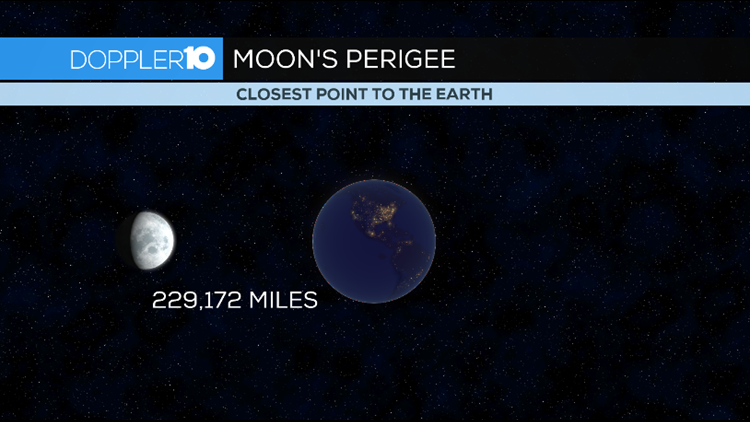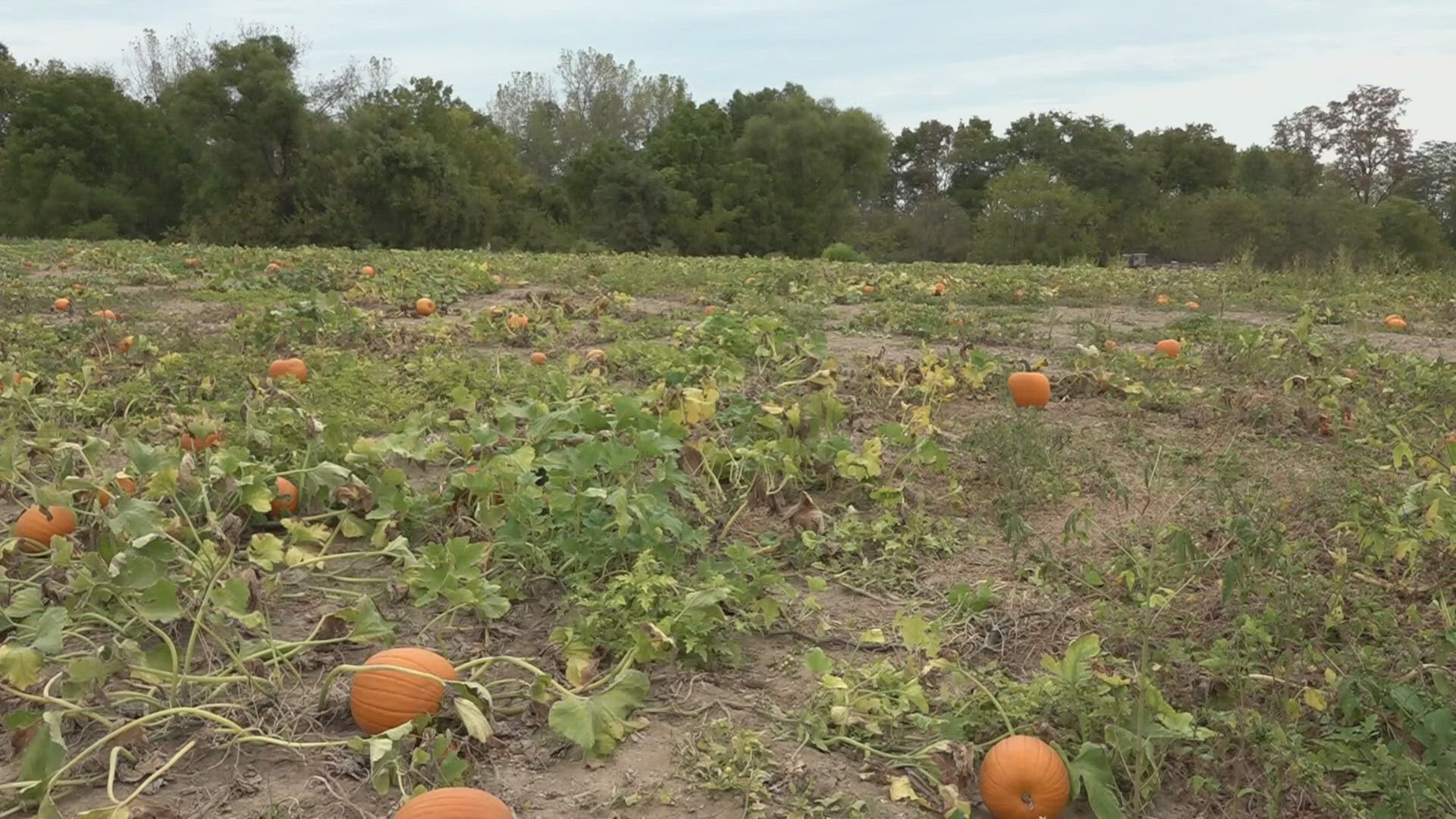When you look up into the night sky this week it'll be tough to miss the moon.
It marches through waxing gibbous to full moon phase by Friday, which means it's getting bigger and brighter each night.
But at just over 229,000 miles away the moon also makes its closest approach to the Earth for the month. Because the moon's orbit isn't an exact circle, there are times when it's closer to the Earth and times when it's farther away.
When it's at its closest point for the month, it reaches perigee. That will happen Monday morning at 9:02 a.m. This is not to be confused with the "supermoon." That's when the full moon occurs at the same time of its closest point to the Earth in its orbit... or at perigee. Technically, the moon will be at perigee after sunrise, so the early bird gets the worm on this one.

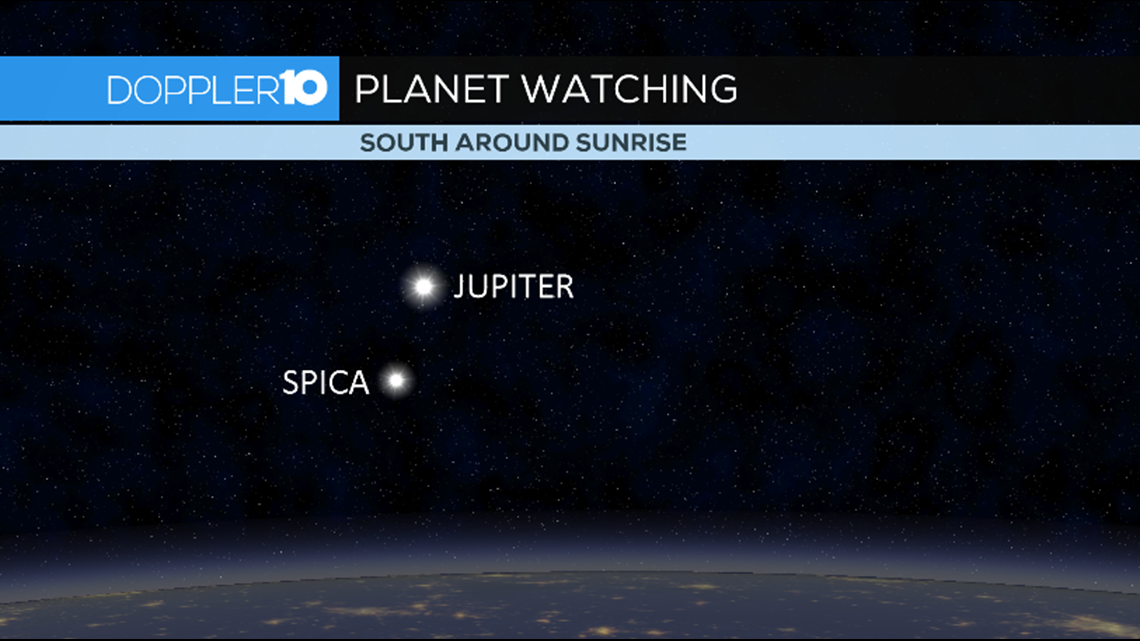
While you're up Monday morning, look for Jupiter which will be in the southern sky in the predawn and sunrise timeframe. You'll find it near Spica, the brightest star in the constellation Virgo.
Jupiter also begins its retrograde motion this week. Because of the our position in the solar system relative to Jupiter's, there are times when the planet appears to move "backwards" in the night sky. That will start to happen this week and explains why the word planet is derived from the Greek for "wanderer" - that's what they appear to do in the night sky at times. Click here for a link to a deeper explanation of retrograde motion.

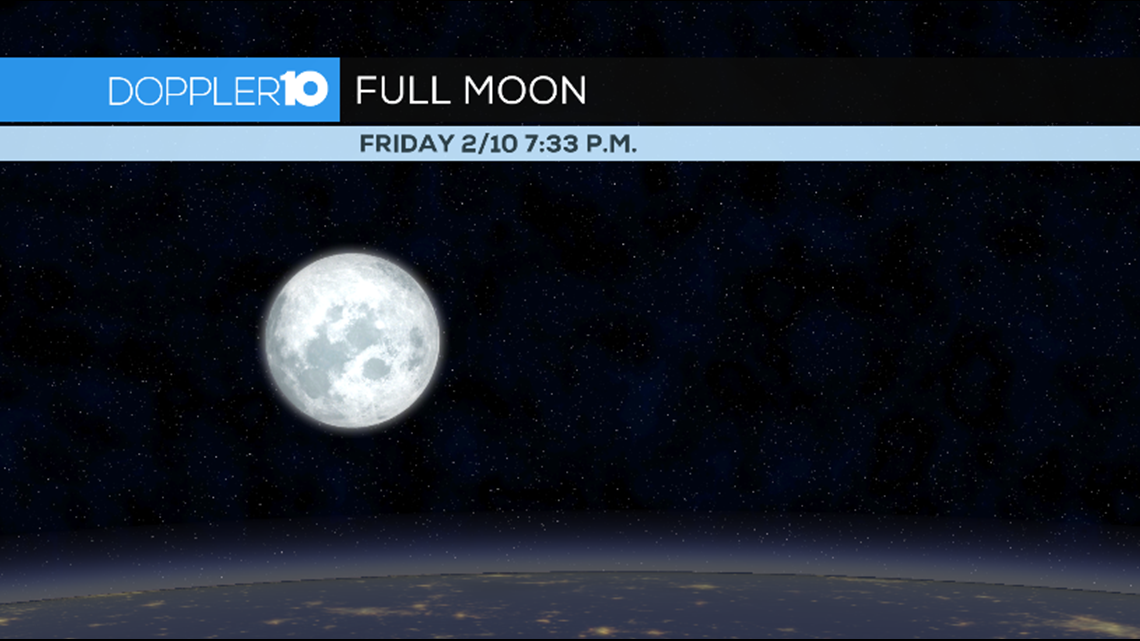
Look for the Full Snow moon this week as well. It's called that because of the heavy snows that can be common in February. It's also known as the Full Hunger moon because historically hunting started to get harder this time of year.
The moon will officially become full at 7:33 p.m. on Friday evening.

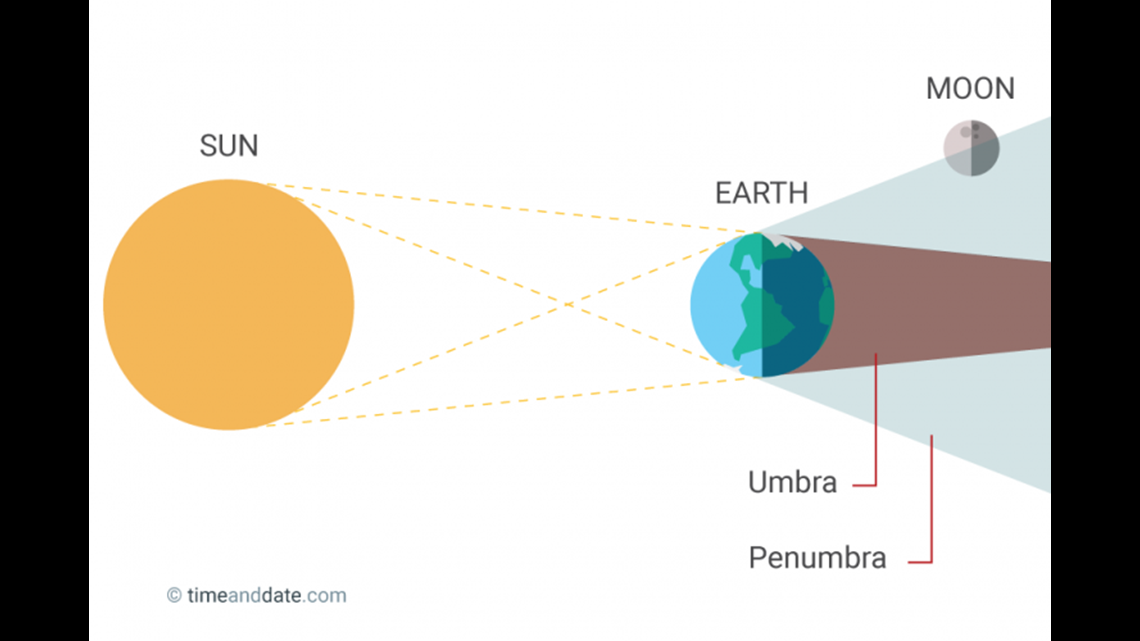
When you observe the full moon Friday night, look for what's known as a penumbral lunar eclipse.
When we talk about the Earth's shadow think of it in two parts: One is darker and cone shaped, it's known as the umbra. The other part is fainter, which is known as the penumbra.
Friday night the Earth will pass through this fainter shadow, so don't be surprised if it looks a little darker than normal, especially seeing that the moon will be full at that time.
The eclipse starts at 5:34 p.m. and ends at 9:53 p.m., but will be tough to see at those times. It gets closest to the umbra at 7:44 p.m., which is when you'll have the best chance of seeing it.
Keep in mind a penumbral lunar eclipse isn't as impressive as a total lunar eclipse but that doesn't mean it's not worth a look.
Happy hunting!


